Abstract
In an accompanying paper we reported the use of differential scanning calorimetry and optical densitometry to characterize the melting and aggregation of 160 bp fragments of calf thymus DNA during heating in the presence of divalent metal cations. Aggregation is observed as thermal denaturation begins and becomes more extensive with increasing temperature until the melting temperature Tm is reached, after which the aggregates dissolve extensively. The order of effectiveness of the metals in inducing aggregation is generally consistent with their ability to induce melting: Cd > Ni > Co > Mn approximately Ca > Mg. Under our experimental conditions (50 mg/ml DNA, 100 mM MCl2, [metal]/[DNA phosphate] approximately 0.6), no measurable aggregates were observed for BaDNA or SrDNA. In this paper we show that the Shibata-Schurr theory of aggregation in the thermal denaturation region provides a good model for our observations. Free energies of cross-linking, induced by the divalent cations, are estimated to be between 34% and 38% of the free energies of base stacking. The ability of a divalent metal cation to induce DNA aggregation can be attributed to its ability to disrupt DNA base pairing and simultaneously to link two different DNA sites.
Full text
PDF
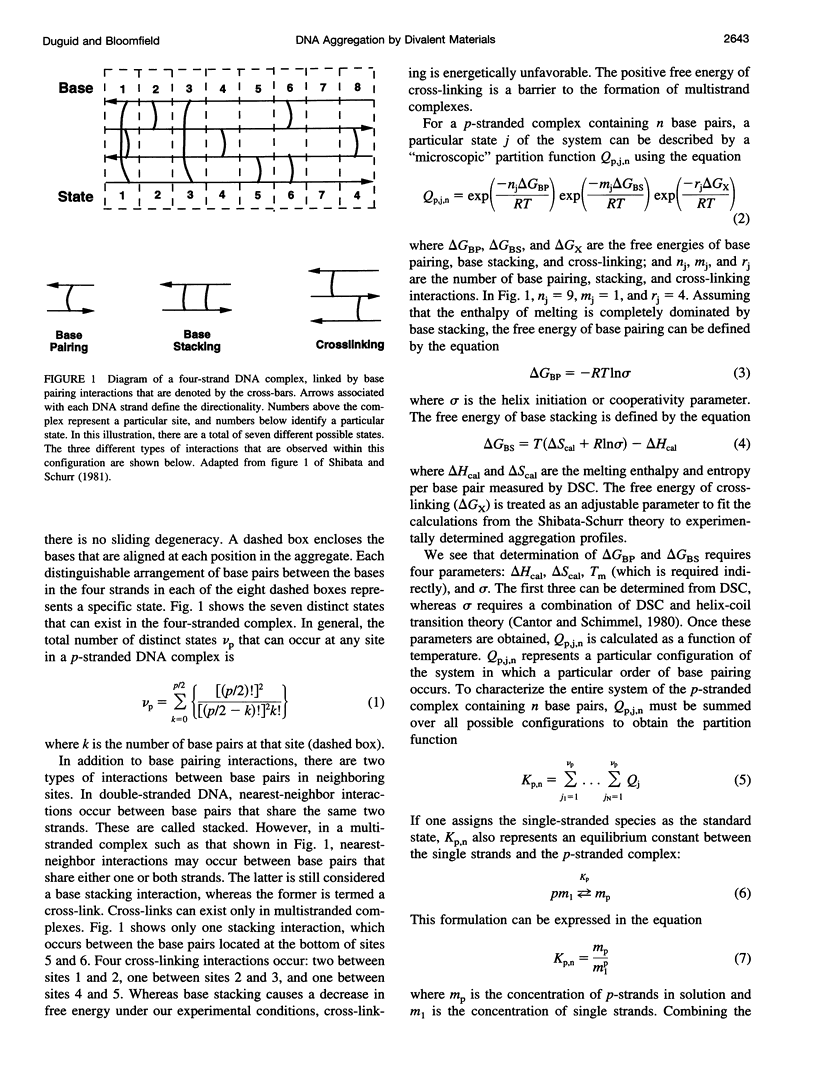
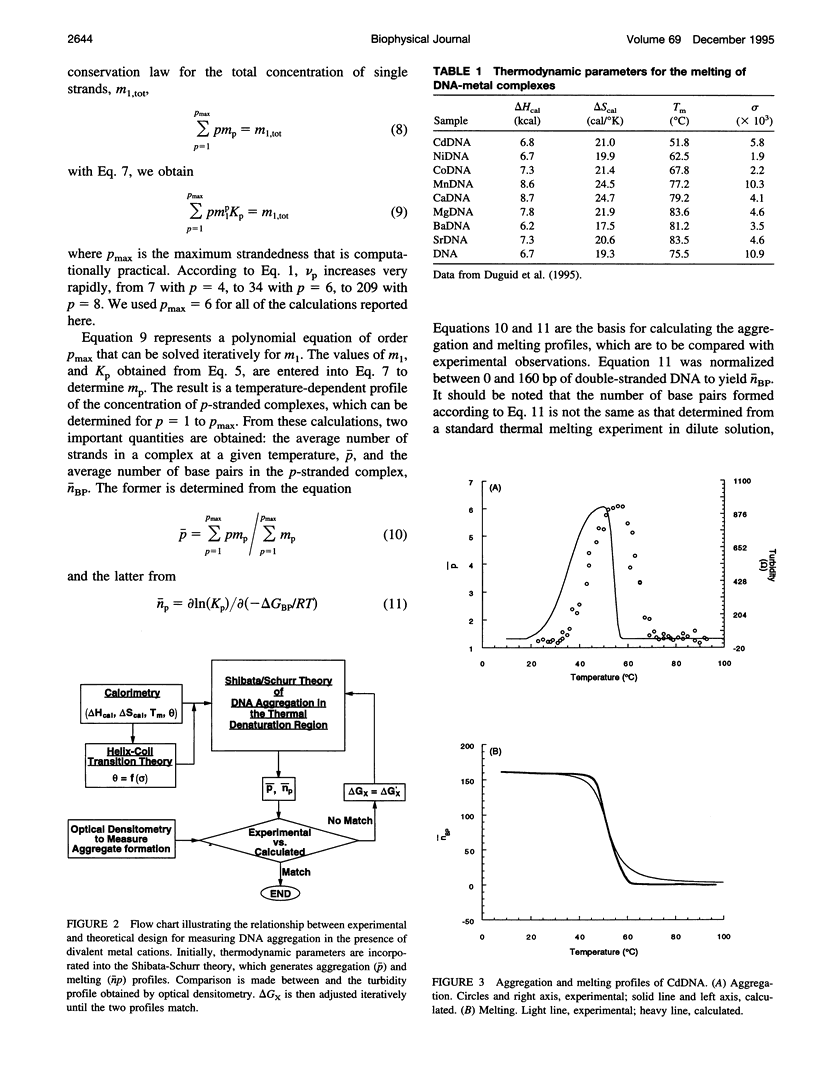
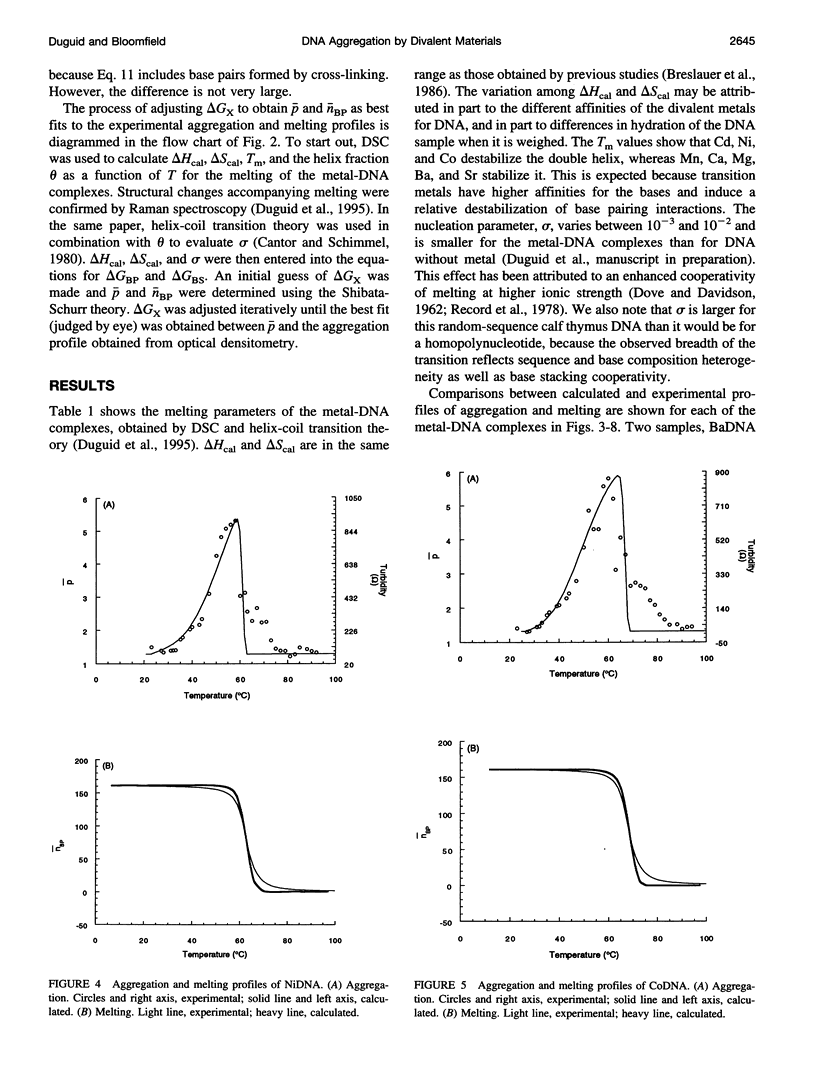
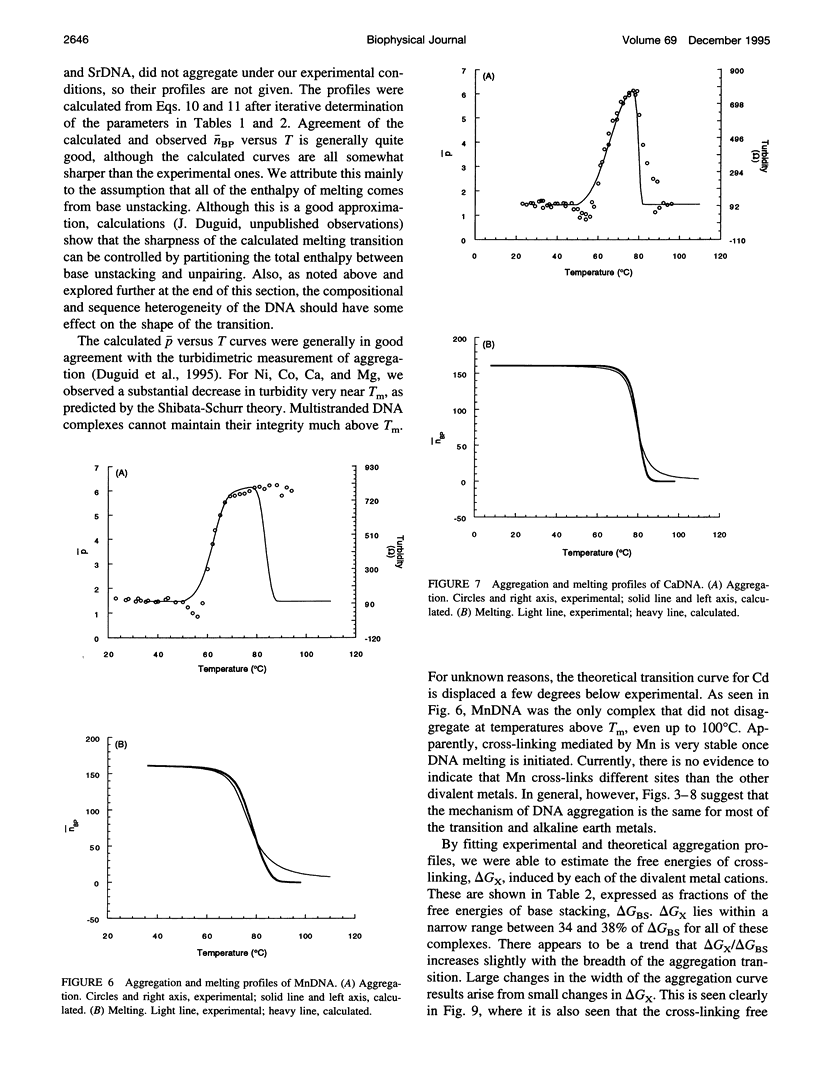
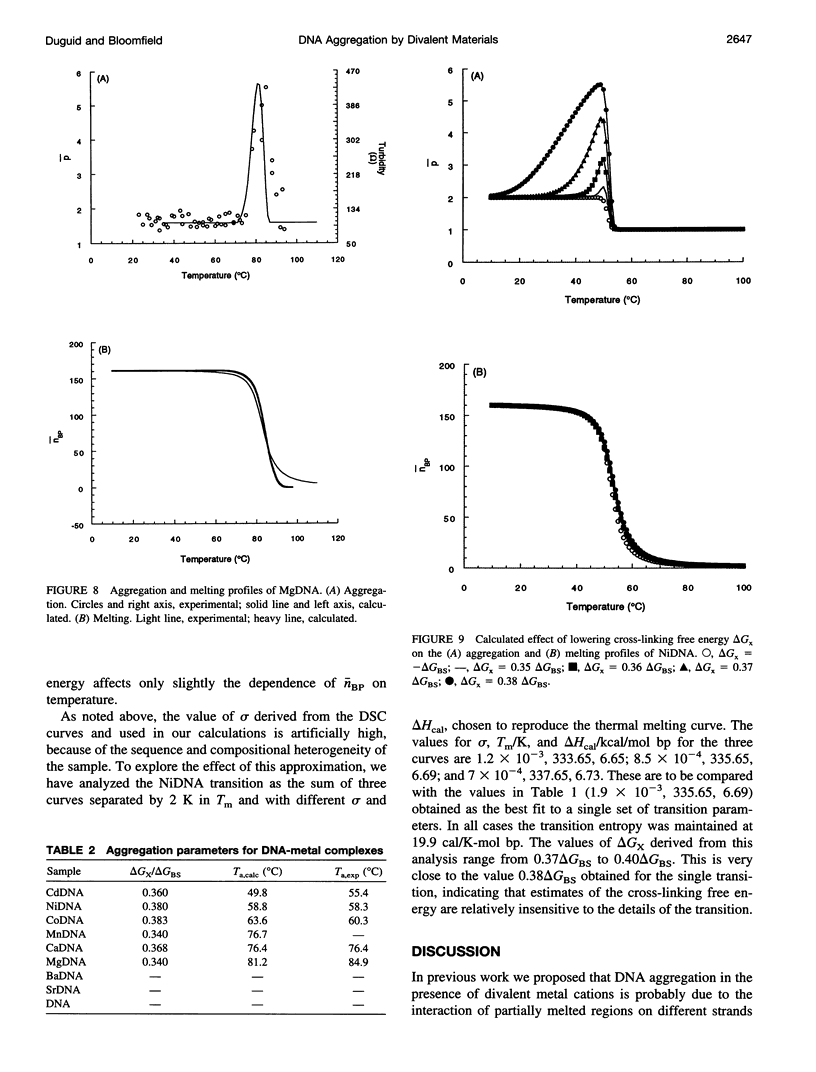
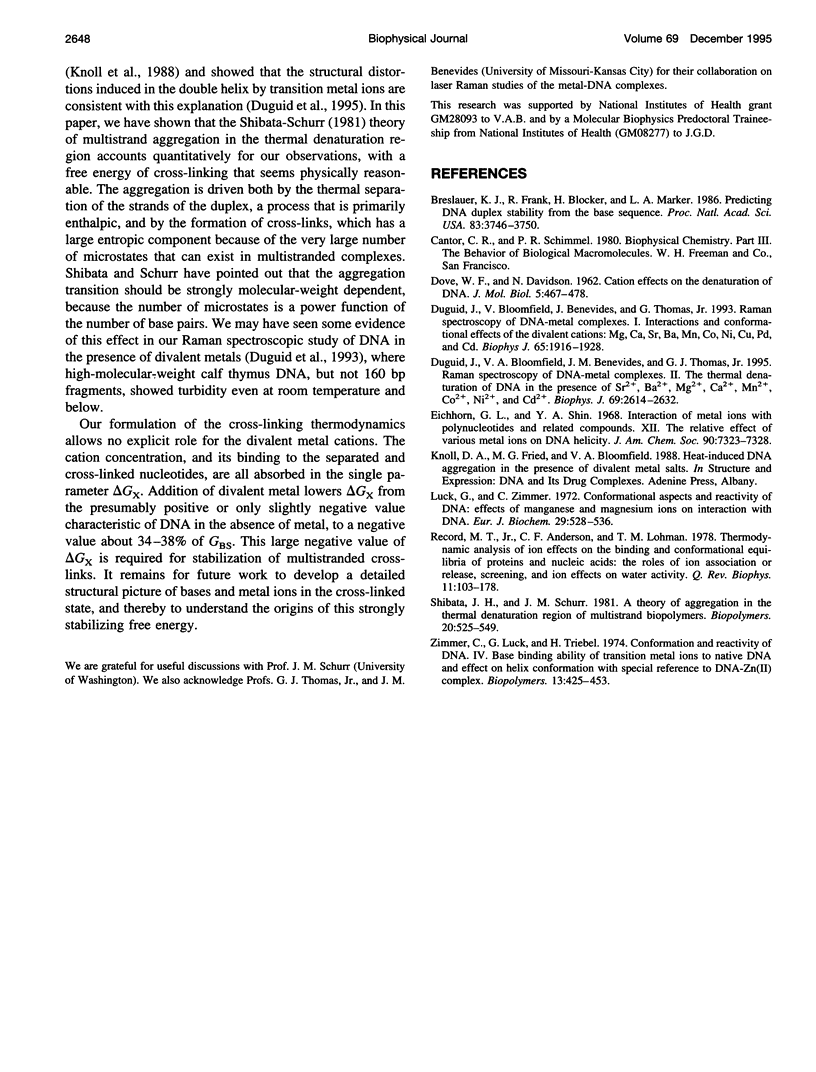
Selected References
These references are in PubMed. This may not be the complete list of references from this article.
- Breslauer K. J., Frank R., Blöcker H., Marky L. A. Predicting DNA duplex stability from the base sequence. Proc Natl Acad Sci U S A. 1986 Jun;83(11):3746–3750. doi: 10.1073/pnas.83.11.3746. [DOI] [PMC free article] [PubMed] [Google Scholar]
- Duguid J., Bloomfield V. A., Benevides J., Thomas G. J., Jr Raman spectroscopy of DNA-metal complexes. I. Interactions and conformational effects of the divalent cations: Mg, Ca, Sr, Ba, Mn, Co, Ni, Cu, Pd, and Cd. Biophys J. 1993 Nov;65(5):1916–1928. doi: 10.1016/S0006-3495(93)81263-3. [DOI] [PMC free article] [PubMed] [Google Scholar]
- Eichhorn G. L., Shin Y. A. Interaction of metal ions with polynucleotides and related compounds. XII. The relative effect of various metal ions on DNA helicity. J Am Chem Soc. 1968 Dec 18;90(26):7323–7328. doi: 10.1021/ja01028a024. [DOI] [PubMed] [Google Scholar]
- Luck G., Zimmer C. Conformational aspects and reactivity of DNA. Effects of manganese and magnesium ions on interaction with DNA. Eur J Biochem. 1972 Sep 25;29(3):528–536. doi: 10.1111/j.1432-1033.1972.tb02018.x. [DOI] [PubMed] [Google Scholar]
- Record M. T., Jr, Anderson C. F., Lohman T. M. Thermodynamic analysis of ion effects on the binding and conformational equilibria of proteins and nucleic acids: the roles of ion association or release, screening, and ion effects on water activity. Q Rev Biophys. 1978 May;11(2):103–178. doi: 10.1017/s003358350000202x. [DOI] [PubMed] [Google Scholar]
- Zimmer C., Luck G., Triebel H. Conformation and reactivity of DNA. IV. Base binding ability of transition metal ions to native DNA and effect on helix conformation with special reference to DNA-Zn(II) complex. Biopolymers. 1974;13(3):425–453. doi: 10.1002/bip.1974.360130302. [DOI] [PubMed] [Google Scholar]


